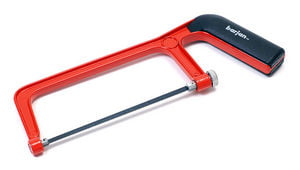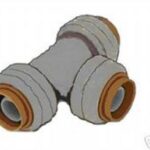Being able to access drain cleanout plugs easily can prevent clogs in the main plumbing lines from creating serious problems throughout the house. Old drain cleanout covers can be very difficult to remove even in the best of circumstances, so if you have an older home with drain cleanout plugs that are stuck, remove the offending covers and replace them with more modern fittings.
To remove old drain cleanout plugs you will need a large adjustable wrench as well as some penetrating oil. Apply a penetrating oil of your choice (WD40 is a popular brand) around the old cover. Be generous with your application and wait fifteen minutes for the oil to work on the seal between the plug and the pipe. Then take your wrench and try to twist the covers off.
If you are lucky you will be able to remove your drain cleanout plugs with only some penetrating oil and a good wrench. However, many covers are firmly attached to the surrounding pipe and must be broken into pieces to be able to be removed. Attempting to remove drain cleanout covers yourself using this method is possible if you have some strength and good aim, if you question your abilities in either of these areas call a plumber to do this job for you.
A homeowner or plumber will remove stuck drain cleanout plugs using a sharp chisel and a ball peen hammer. First, you or your plumber should attempt to place the chisel near the edge of the drain cleanout cover at an angle and strike it with the hammer, creating force in a counterclockwise motion. If you get even a small amount of movement using this technique, stop after a few sound hits, apply penetrating oil to the cover and attempt to remove it with the wrench.
If the chisel does not turn the pugs, you or your plumber should break up the drain cleanout plug using the hammer and chisel. Be careful to not hit the surrounding pipe and stop to remove pieces of the drain cleanout covers as they are broken. It is important to remove all of the pieces of the broken plugs before attempting to install new covers.
Next, you should spend some time cleaning the threads of the pipe thoroughly. If you are working with cast iron pipe, an old toothbrush or in some cases a wire brush should be able to do the job fine. Pay particular attention to removing any lingering pipe joint compound.
With the area clean and the old plugs removed, you can then install a new covers. New drain cleanout covers come in two varieties. The first type of drain cleanout plugs mimic classic designs but may be made out of different materials than the plug you just removed. Installing classic drain cleanout plugs is easy, put a bead of pipe joint compound around the threads of the plugs and twist them into place with a wrench. Once the new drain cleanout covers are in place you should remove any extruding pipe joint compound.
Modern drain cleanout plugs are made of a combination of rubber and metal plates. These types of drain cleanout plugs look like a pair of metal plates with a thick rubber washer in between them. On the tops of these drain cleanout covers is a wing nut. These drain cleanout plugs are the easiest to remove and install. Just place the covers in the proper location and tighten down the wing nut. The wing nut draws the two circular metal plates together, causing the rubber to bulge and create a water tight seal around the pipe. These drain cleanout covers are more expensive but if you ever need access to your main drain these plugs will be well worth the cost.
Like many home improvement projects, your success in completing this task will depend on luck and your previous experience and skills working with plumbing. If you have difficulty removing the covers yourself, consider calling a plumber who can do the work for you and can recommend other maintenance jobs that will keep your plumbing in good shape.





